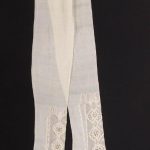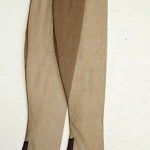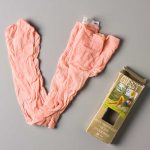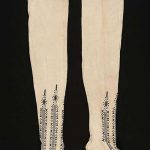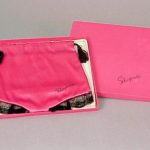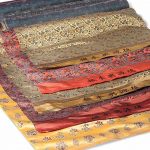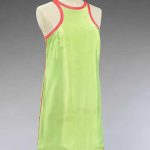Hosiery, also referred to as legwear, describes garments worn directly on the feet and legs. The term originated as the collective term for products of which a maker or seller is termed a hosier; and those products are also known generically as hose. The term is also used for all types of knitted fabric, and its thickness and weight is defined by denier or opacity. Lower denier measurements of 5 to 15 describe a hose which may be sheer in appearance, whereas styles of 40 and above are dense, with little to no light able to come through on 100 denier items.
The first references to hosiery can be found in works of Hesiod, where Romans are said to have used leather or cloth in forms of strips to cover their lower body parts. Even the Egyptians are speculated to have used hosiery, as socks have been found in certain tombs.
Most hosiery garments are made by knitting methods. Modern hosiery is usually tight-fitting by virtue of stretchy fabrics and meshes. Older forms include binding to achieve a tight fit. Due to its close fit, most hosiery can be worn as an undergarment, but it is more commonly worn as a combined under/outer garment.
Hosiery garments are the product of hosiery fabric produced from hosiery yarn. Like the yarn used for making woven fabric, hosiery yarn comes from a separate spinning (yarn making) process, and is used with circular knitting machines to form fabric. One or more hosiery yarn is used to make knitted or hosiery fabric, and garments produced out of this are generally referred to as hosiery garments. Reference: Wikipedia
EMPRESS EUGENIE HOSIERY, FRANCE, MID 19TH CENTURY.
White silk w/ imperial monogram of crown above E, lace vamps w/ paper script attribution; t/w 17 pair colored & wedding hosiery; 4 pair knit socks; 9 pairs of lace & crochet gloves; all very good – excellent
Sold for $1,600 at Augusta Auctions in 2018
Stockings 1949 Sapphire Hosiery Corporation American
Reference: The Metropolitan Museum of Art
Pair of stockings with packaging from Italy Made by Gloriette Hosiery Co. in Italy, Europe, 1965.
The history of the stocking highlights the early significant advancements that were made, not only in the area of manufacturing technology but in textile design. The developments and innovations made over time in technology and textile design of the ‘humble’ stocking have had far-reaching applications into many other areas. For instance, replacing silk with nylon as parachute material during World War 2. This collection charts the innovations in textile design from the use of natural to synthetic fibres and the effect that had on design, application, affordability and accessibility. As a social narrative, these stockings provide an insight into social, fashion and in some instances, cultural customs of the different periods represented.
Reference: Museum of Applied Art and Sciences
Hosiery American1860–1900
Woman’s full-fashioned stockings. White cotton knit with 3 black embroidered decorative stripes (mostly in X-motifs) on boots. *****on double welts. Reinforced toes and heels.
Reference: Museum of Fine Arts Boston
Schiaparelli Pink Panties Hosiery Bag Satin, with black lace, in original box. New.
Sold for $100 (includes buyer’s premium) at Doyle New York in 2000
[geolocator_show for=”GB”][ebayfeedsforwordpress feed=”http://rest.ebay.com/epn/v1/find/item.rss?keyword=hosiery&categoryId1=175759&sortOrder=BestMatch&programid=15&campaignid=5338620288&toolid=10039&customid=pastimefashions-rss-uk-hosiery&listingType1=All&feedType=rss&lgeo=1″ items=”20″][/geolocator_show]
[geolocator_hide for=”GB”][ebayfeedsforwordpress feed=”http://rest.ebay.com/epn/v1/find/item.rss?keyword=hosiery&categoryId1=175759&sortOrder=BestMatch&programid=1&campaignid=5338620289&toolid=10039&customid=pastimefashions-rss-us-hosiery&listingType1=All&feedType=rss&lgeo=1″ items=”20″][/geolocator_hide]
